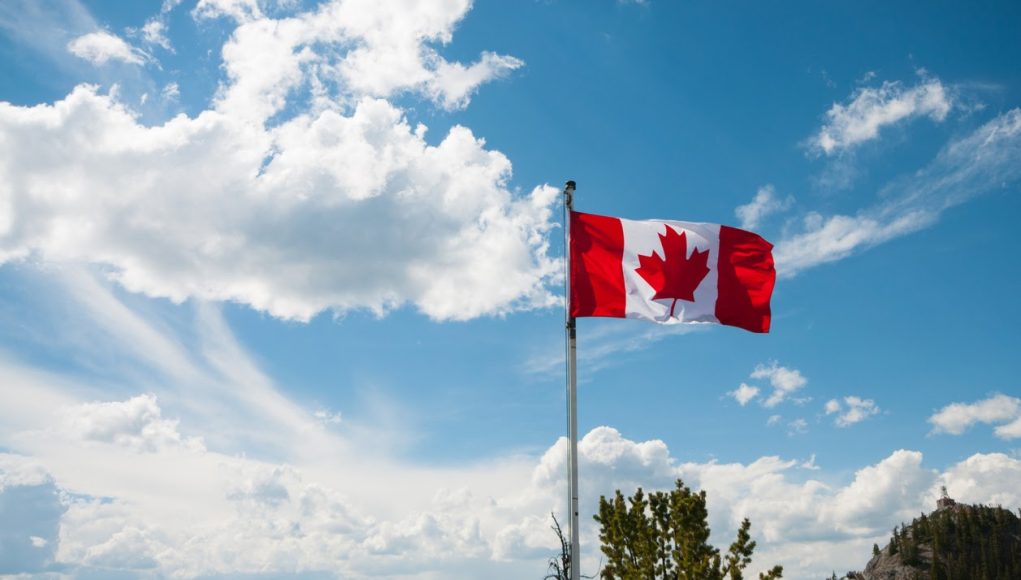Happy Flag Birthday
Hodge Podge by Charlie Hodge
For something iconic about to turn 60 there has not been a lot of fuss made.
These past few years have seen the piece of art dealt with at varying levels of respect and pride – yet one thing is a fact – Canada’s national flag officially turns 60 on February 15, 2025.
Ironically, there was a lot more noise made by Canadians regarding our flag during earlier time periods in our history than there is on its recent birthday.
The ‘Maple Leaf’, which consists of an11-pointed red maple leaf within a white square at its centre and two red borders, was officially adopted in 1965 to replace our first flag. Before the Maple Leaf the Canadian Red Ensign had been unofficially used since the 1890s. The ensign became our officially recognized banner when it was approved by an Order in Council in 1945 for use, “wherever place or occasion may make it desirable to fly a distinctive Canadian flag.”
Despite the official ‘order’ few Canadians truly embraced the decision, feeling like the flag was really nothing distinct or unique to their young nation. Many felt the new country deserved its own unique pennant.
After decades of controversy it was finally Prime Minister Lester Pearson who formed a committee in 1964 to resolve the issue, yet ultimately sparked serious debate from sea to shining sea.
After months of speculation and argument three final choices were seriously considered with the maple leaf design crafted by George Stanley eventually gaining the final nod. Stanley had based his flag on the colour scheme and look of the banner used by the Royal Military College of Canada.
It seems appropriate that the maple leaf holds its place of honour in our country since it has been used as a Canadian emblem since the 1700s.
In 1868 the maple leaf firmly moved into the Canadian psyche when it appeared on the coat of arms of both Quebec and Ontario. The year before song composer Alexander Muir wrote his iconic tune the Maple Leaf Forever.
From 1876 until 1901 the leaf appeared on all coins minted in Canada and remained on the one cent piece until its recent demise as a coin. By the year 1921 the leaf had found its way onto the nation’s Coat of Arms proclaimed by King George V.
Our first Canadian flag was the one used by the Governor General which was basically similar to the Union Jack and bearing the quartered arms of Ontario, Quebec, Nova Scotia, and New Brunswick surrounded by a wreath of maple leaves.
In 1870 the Union Jack, with the addition of the Canadian composite shield in the fly, began to be used unofficially and was referred to by most as the Canadian Red Ensign.
However even then no one was pleased and so back in 1925 Prime Minister Mackenzie King appointed a committee to design the new national flag. That committee disappeared and no one knows why.
New flag designs were proposed repeatedly between 1927 and 1939.
Again, in November 1945 a joint committee of the Senate and House of Commons was appointed to recommend a national flag and received more than 2,400 designs from the public. Eventually the committee reported back with a Canadian red ensign with a “maple leaf in autumn golden colours in a bordered background of white.” Despite the report King declined to act on the report, leaving the order to fly the Canadian Red Ensign in place.
In 1958, an extensive poll was taken of adult Canadians regarding the flag with more than 80 percent wanting a national flag entirely different from that of any other country. Some 60 per cent wanted the flag to include a maple leaf.
The ‘Great Canadian Flag debate’ started in 1963 and in February 1964, a three-leaf design was leaked to the press. The leaves were red and the two edge borders blue. Though popular with some it stirred further debate and on June 15, 1964, Prime Minister Pearson announced an official discussion on the issue would begin. The arguing lasted more than six months, bitterly dividing Canadians across the land.
The debate finally ended by ‘closure’ December 15, 1964, resulting in our current flag. It was inaugurated on February 15, 1965.
Ironically it was military use that both inspired and yet nearly eliminated the Maple Leaf as the focal point of our new flag. Famous Canadian military outfits such as the Royal Canadian Regiment had used as its symbol as far back as 1860.
Maple Leaf shaped badges adorned hats and uniforms throughout the First and Second World Wars and eventually became the symbol used on the tombstones of fallen Canadian soldiers. Despite the popularity of the Maple Leaf on badges and headstones many veterans and those of British background argued years later that Canada should keep the Red Ensign forever since so many soldiers had fought and died under its colours
More research shows that the number of points on the leaf has no significance except that the number and arrangement of the points were chosen, “after wind tunnel tests showed the current design to be the least blurry of the various designs when tested under high wind conditions.”
So there you have it, everything and more that you needed to know about the Canadian flag. Even though, few of us really seem all that interested.








